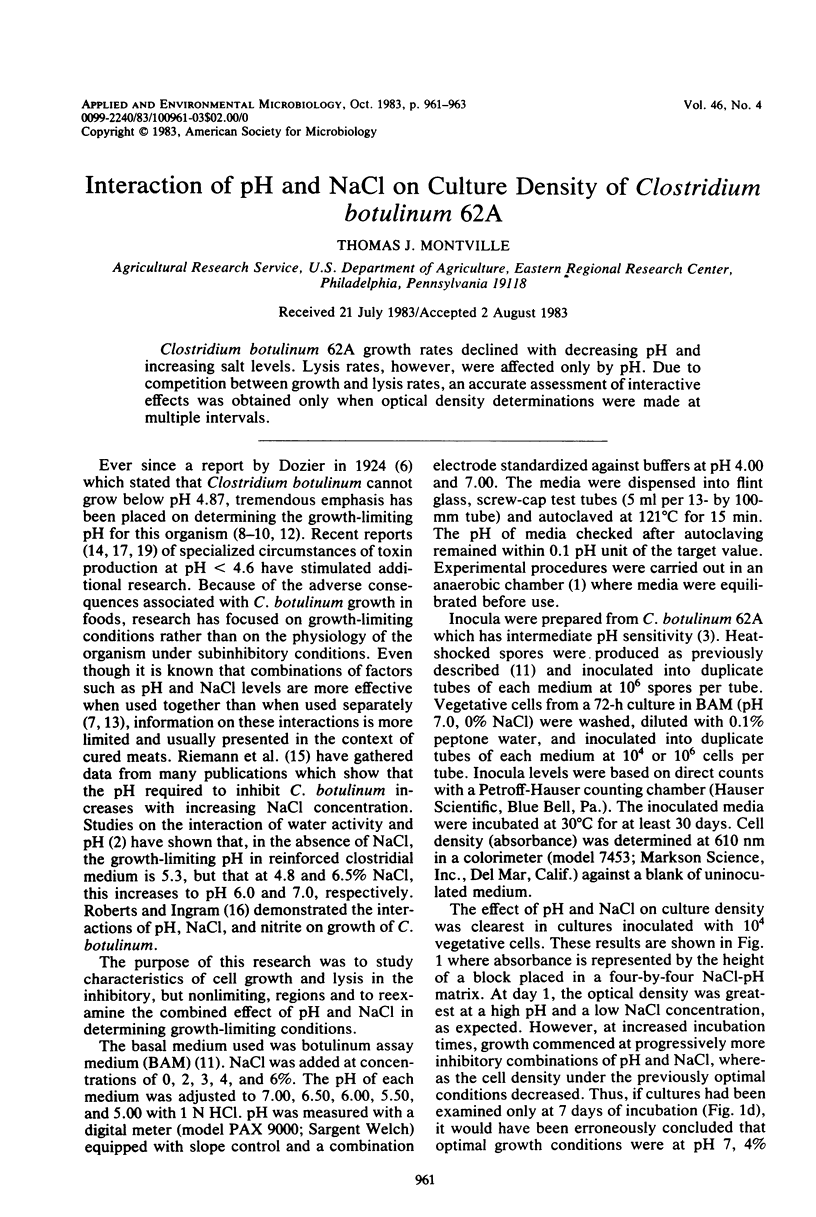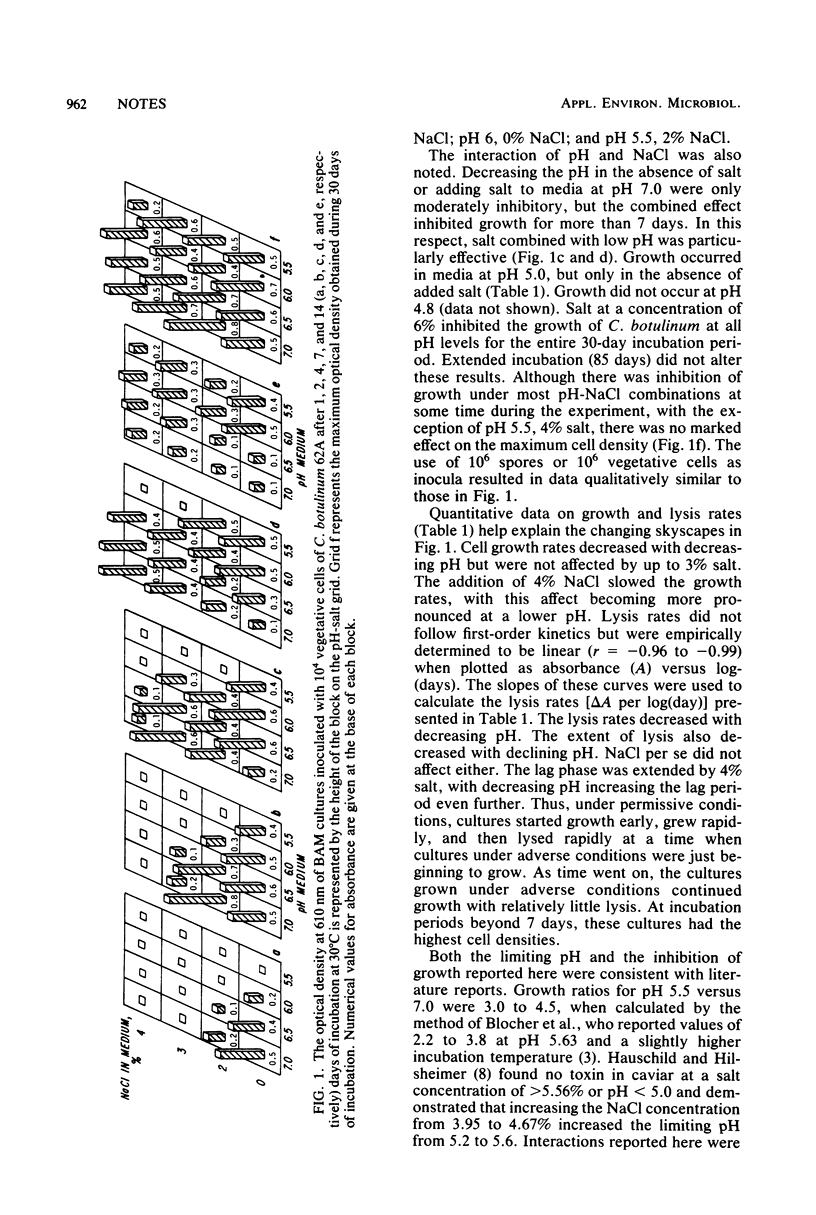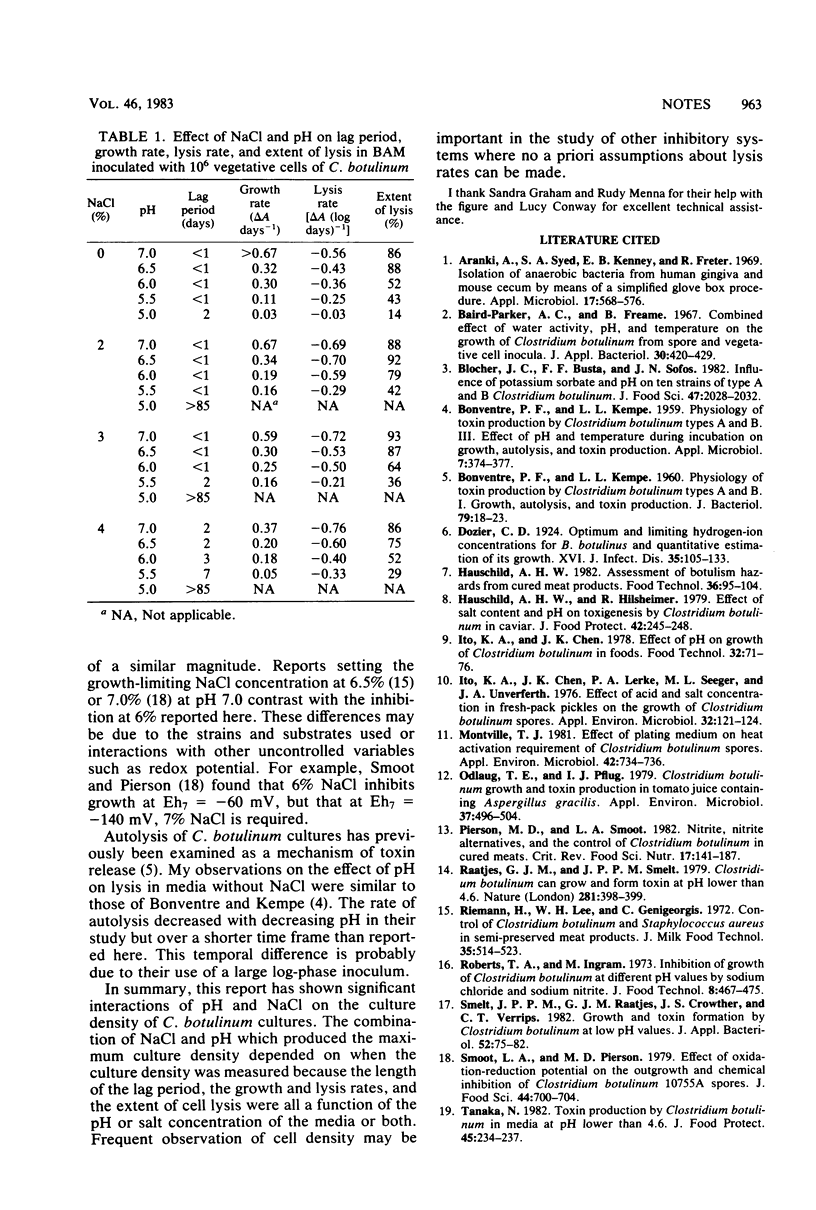Abstract
Clostridium botulinum 62A growth rates declined with decreasing pH and increasing salt levels. Lysis rates, however, were affected only by pH. Due to competition between growth and lysis rates, an accurate assessment of interactive effects was obtained only when optical density determinations were made at multiple intervals.
Full text
PDF


Selected References
These references are in PubMed. This may not be the complete list of references from this article.
- Arank A., Syed S. A., Kenney E. B., Freter R. Isolation of anaerobic bacteria from human gingiva and mouse cecum by means of a simplified glove box procedure. Appl Microbiol. 1969 Apr;17(4):568–576. doi: 10.1128/am.17.4.568-576.1969. [DOI] [PMC free article] [PubMed] [Google Scholar]
- BONVENTRE P. F., KEMPE L. L. Physiology of toxin production by Clostridium botulinum types A and B. I. Growth, autolysis, and toxin production. J Bacteriol. 1960 Jan;79:18–23. doi: 10.1128/jb.79.1.18-23.1960. [DOI] [PMC free article] [PubMed] [Google Scholar]
- BONVENTRE P. F., KEMPE L. L. Physiology of toxin production by Clostridium botulinum types A and B. III. Effect of pH and temperature during incubation on growth, autolysis. and toxin production. Appl Microbiol. 1959 Nov;7:374–377. doi: 10.1128/am.7.6.374-377.1959. [DOI] [PMC free article] [PubMed] [Google Scholar]
- Baird-Parker A. C., Freame B. Combined effect of water activity, pH and temperature on the growth of Clostridium botulinum from spore and vegetative cell inocula. J Appl Bacteriol. 1967 Dec;30(3):420–429. doi: 10.1111/j.1365-2672.1967.tb00320.x. [DOI] [PubMed] [Google Scholar]
- Ito K. A., Chen J. K., Lerke P. A., Seeger M. L., Unverferth J. A. Effect of acid and salt concentration in fresh-pack pickles on the growth of Clostridium botulinum spores. Appl Environ Microbiol. 1976 Jul;32(1):121–124. doi: 10.1128/aem.32.1.121-124.1976. [DOI] [PMC free article] [PubMed] [Google Scholar]
- Montville T. J. Effect of plating medium on heat activation requirement of Clostridium botulinum spores. Appl Environ Microbiol. 1981 Oct;42(4):734–736. doi: 10.1128/aem.42.4.734-736.1981. [DOI] [PMC free article] [PubMed] [Google Scholar]
- Odlaug T. E., Pflug I. J. Clostridium botulinum growth and toxin production in tomato juice containing Aspergillus gracilis. Appl Environ Microbiol. 1979 Mar;37(3):496–504. doi: 10.1128/aem.37.3.496-504.1979. [DOI] [PMC free article] [PubMed] [Google Scholar]
- Pierson M. D., Smoot L. A. Nitrite, nitrite alternatives, and the control of Clostridium botulinum in cured meats. Crit Rev Food Sci Nutr. 1982;17(2):141–187. doi: 10.1080/10408398209527346. [DOI] [PubMed] [Google Scholar]
- Raatjes G. J., Smelt J. P. Clostridium botulinum can grow and form toxin at pH values lower than 4.6. Nature. 1979 Oct 4;281(5730):398–399. doi: 10.1038/281398a0. [DOI] [PubMed] [Google Scholar]
- Smelt J. P., Raatjes G. J., Crowther J. S., Verrips C. T. Growth and toxin formation by Clostridium botulinum at low pH values. J Appl Bacteriol. 1982 Feb;52(1):75–82. doi: 10.1111/j.1365-2672.1982.tb04375.x. [DOI] [PubMed] [Google Scholar]


